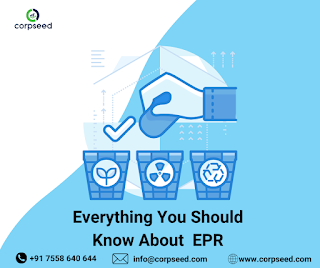CPCB Guidelines for E-Waste Management Rules 2016
E-waste
Electronic waste incorporates waste from hardware, including disposed of cell phones, fridges, electronic office gear, PCs, TVs, and electronic amusement gadgets.
"Electronic waste" might be characterized as disposed of PCs, office electronic gear, amusement gadget hardware, cell phones, TVs, and fridges. This incorporates utilized gadgets that are bound for reuse, resale, rescue, reusing, or removal. Others are re-usable (working and repairable hardware) and optional piece (copper, steel, plastic, and so forth.) to be "waste," and hold the expression "E-waste" for buildup or material which is dumped by the purchaser instead of reused, including buildup from reuse and reusing tasks.
E-waste signifies waste electrical and electronic equipment, an entire or limited extent disposed of as waste by the buyer or mass customer as a reject from their assembling, restoration, and fix measures.
E-waste Management
One of the significant difficulties is 'reusing' the printed circuit sheets from electronic waste. The circuit sheets contain such precious metals as silver, gold, platinum, and so forth and such base metals as iron, copper, aluminum, and so on. One way e-waste is handled by dissolving circuit sheets, consuming link sheathing to recuperate copper wire, and open-pit corrosive filtering for isolating metals of significant worth. The conventional strategy utilized is mechanical destroying and division, yet the reusing proficiency is low. Elective techniques such as ascryogenic decomposition have been read for printed circuit board reusing, and some different strategies are under scrutiny. Appropriately discarding or reusing hardware can help forestall medical issues, lessen ozone-depleting substance outflows, and make employments. Reuse and repairing offer an all the more ecologically amicable and socially conscious choice to downcycling measures.
E-waste Management Rules 2016
Looking at growing problems of e-waste, the Central Pollution Control Borad(CPCB) Government in the exercise of the powers provided under Sections 6, 8, and 25 of the Environment Protection Act, 1986, has notified these rules. E-Waste Management Rules 2016 replace the E-Waste (Management and Handling) Rules, 2011. It consists of 24 rules divided into Six Chapters and four Schedules. The rules aim to enable the recovery and reuse of useful material from e-waste, thereby reducing hazardous waste destined for disposal and ensuring the environmentally sound management of all types of waste of electrical and electronic equipment. These rules come into force from 1st October 2016.
These rules implemented and apply to every Producer, Consumer, and Bulk Consumer, Manufacturer, collection centers, dealers, e-retailer, refurbisher, dismantler and recycler involved in the manufacture, sale, purchase, and processing of electrical and electronic devices, including their parts, consumables, parts, and spares which make the product operational but shall not apply to
a) Used lead-acid batteries as covered under the Batteries (Management and Handling) Rules, 2001 made under the Act;
b) Micro enterprises come under Micro, Small and Medium Enterprises Development Act2006 provision.
c) Atomic Energy Act 1962 provision covers radio-active wastes rules.
CPCB Guidelines for E-Waste Management Rules 2016
Target based methodology for execution of EPR has been embraced in the E-Waste (Management) Rules, 2016, which specify phasewise collection target t oproducers for the collection of e-waste, either in number or weight, which will be 30% of the estimated amount of waste age during initial long term of usage of rules followed by 40% during third and fourth years, half during fifth and 6th years and 70% during seventh year onwards.
The E-Waste (Management) Rules, 2016 command CPCB to plan rules on usage of E-Waste Rules, which incorporates explicit rules for expanded maker obligation, channelisation, assortment centres,storage, transportation, environmentally sound destroying and reusing, repair, andrandom inspecting of EEE for testing of RoHS parameters.
- Producer Responsibility Organisation(PRO)or E-Waste Exchange framework as implemment in their EPR Plan which is approved by the CPCB.Selling or buying of EEE in the market by any maker without EPR Authorisationshall be considered as an infringement of the Rules and making harm nature, which will draw in arrangements under E (P) Act, 1986.
- Information concerning to collection and storage should be annexed to Form-1. It ensures that collection and storage of E-waste is managed by the guidelines for collection and storage of e-waste.



Comments
Post a Comment